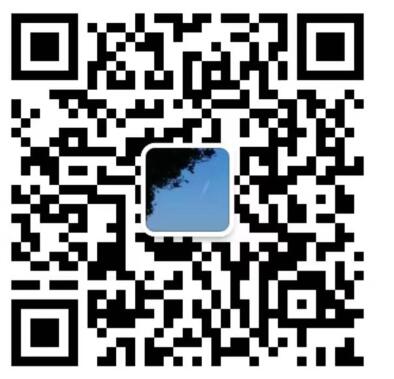THE Chinese, President Grover Cleveland proclaimed in 1888, are “an element ignorant of our constitution and laws, impossible of assimilation with our people, and dangerous to our peace and welfare.” That decade, with its acts excluding fresh Chinese immigrants and even blocking re-entry to those Chinese who had temporarily returned home, broke the myth that the United States was an all-embracing haven for the world‘s huddled masses. But what of the story of the Chinese in America themselves?
Because of anti-Chinese hysteria-from the race riots in western mining towns in Cleveland‘s time to the nasty late-1990s witch hunt by the Clinton administration and the New York Times of Wen Ho Lee, a Taiwanese-American scientist at Los Alamos who was falsely accused of passing nuclear warhead technology to China-the Chinese in America have generally chosen to keep a low profile. It is time their story was given a wider airing. The strength of Iris Chang‘s book is that she is steeped in her subject, but it has weaknesses.
Narrative history often paints individual lives with too epic a sweep. The turmoil in China that has so often been the backdrop to emigration in the past 150 years is described rather too broadly here to be of much help. The importance among new Chinese arrivals of local clans and identities back in mainland China is not sufficiently emphasised. Why, for instance, do the wealthy snakeheads who organise much of the illegal immigration into America come from one small district in Fujian province? Ms Chang does not travel there-or not obviously even to New York‘s Chinatown-to find out.
Her descriptions of the early Chinese in America battling blizzards, mudslides and mistreatment in the mining and railroad camps have the flavor of an old newsreel. It is not a format for insight, or irony of the intended sort. Thus, where the reader wants to know more about the consequences of the sexual frustration of all-male Chinese communities far from home (there was prostitution and violence, of course, but also an intriguing round of Chinese-Irish marriages), Ms Chang‘s vagueness is unintendedly funny. “Entrepreneurs in the world‘s oldest profession,” she writes, “rode furiously on horsebock from camp to camp, trying to fit as many clients as possible into their schedules.”
Similarly, she fails to look closely at the role of the Chinese in America in the growth, if not of globalization, then of a ring of economic connections and population shifts that have turned the Pacific into a flourishing and unified economic space. What of Chinese-America‘s equivalent of Yip Sang, an early example of what Felipe Fernandez-Armesto calls “Pacific man”? In the late 19th century he left Fujian province for San Francisco and then Vancouver, where he became an agent of the Canadian Pacific Railroad; by the early 1900s, his own company had a flourishing international trade between San Francisco, Vancouver, Yokohama and Hong Kong.
Ms Chang does not delve into the Pacific ties that might have made such a man. She does say that, during the gold rush, many Californians shipped their laundry to be cleaned in Hong Kong, at $1 a shirt. If this is true-and it is a staggering proposition, given that the Pacific Mail Steamship Company made just a dozen sailings a year, taking 33 days-then the subject deserves a chapter, not just the briefest of mentions.
1888年,美国总统格罗弗•克利夫兰声称:”中国人是一帮不懂美国宪法和法律的人,他们根本不可能和我们的人民融洽相处,还会对我们的和平与财富造成威胁。”在那十年期间,美国驱逐新来的中国移民,甚至阻止那些已经居住在美国,但只是暂时返回家乡的中国人;这一切都使美国是个包容世界上一切颠沛流离之人的天堂这个神话不攻自破。那么,那些美籍华人又有着怎样的酸甜苦辣呢?1888年,美国总统格罗弗•克利夫兰声称:”中国人是一帮不懂美国宪法和法律的人,他们根本不可能和我们的人民融洽相处,还会对我们的和平与财富造成威胁。”在那十年期间,美国驱逐新来的中国移民,甚至阻止那些已经居住在美国,但只是暂时返回家乡的中国人;这一切都使美国是个包容世界上一切颠沛流离之人的天堂这个神话不攻自破。那么,那些美籍华人又有着怎样的酸甜苦辣呢?
在克利夫兰任期内,西部的矿业城镇的种族暴乱中反华情绪盛行。在道德败坏的20世纪90年代末期,克林顿政府对华人进行政治迫害。1999年纽约时报报道:美籍台湾科学家李文和在洛斯阿拉莫斯被不实地指控向中国泄露核弹头技术。面对以上种种,美籍华人通常都只会选择保持低调。如今,是时候让更多的人知道他们的故事了。张纯如女士的著作的优点在于她全心钻研书的主题,但其中仍有一些不足之处。
叙事体历史经常倾向用一种伟大的方式去讲述个人的故事。在过去的150年里,中国的混乱形势一直是移民的一大背景,但张女士的书对这个背景的描述却过于概括,对读者的理解帮助不大。那时刚刚到达美国的中国家庭与个人又被送回中国大陆,但这本书却没有给予这件事足够的重视。还有例如,为什么那些组织中国人非法移民去美国的富有蛇头无一不来自福建省的小地方?张女士并没有亲自去福建省探个究竟,她甚至连纽约的唐人街也没有去过。
书中写到:早期的美籍华人在煤矿和铁路上与暴风雪、泥石流、虐待行为顽强抗争——张女士的描述就像旧式新闻影片一样。那不是什么深刻的见解,也并非有意的讽刺。早期的美籍华人全都是男性,所以,读者们很想知道他们经历了性方面的挫折后出现了何种后果(当然,他们可以叫妓女或侵犯其他妇女,而当时华人与爱尔兰人联姻潮也是个有趣的现象),而张女士对此的含糊其词则出乎意料地妙趣横生。”那些卖淫者,”她写到,”他们快马加鞭地从一个阵营赶往另一个阵营,试图尽可能招揽更多的客人。”
与此类似,她没有仔细研究美籍华人为当地发展所作的贡献,即使他们对全球化没有什么积极影响,但也促进了一系列经济关系的发展,改变了人口分布格局,这些都使太平洋地区如今成为了一个繁荣统一的经济体。阿寿就是菲利普•费尔南多-阿梅斯托称之为”太平洋伟人”的早期例子之一,像他这样美籍华人又有怎样的故事呢?19世纪末,阿寿离开中国福建省前往美国旧金山,之后又去了加拿大温哥华,在那里他成为了加拿大太平洋铁路的一个代理商。到了20世纪初,他的公司已经在旧金山、温哥华、横滨和香港之间发展起繁茂的国际贸易。
但张女士却不曾深入研究过能造就出阿寿这等人物的太平洋地区各国间的关系。不过她说过,在淘金热时期,很多加利福尼亚州人都将脏衣服用船运往香港给别人洗,价钱为每件1美圆。如果她说的没错的话,那这个话题可十分惊人!因为那时太平洋邮船公司每年都会作12次航行,每次大约33天,光是这个内容就可以用一个章节的篇幅大写特写,而不是三言两语草草了事。




